Knowledge Material What Is An Information Fabric?
Enable quicker time-to-value for business users, enhance productivity for knowledge engineering, present higher efficiency for operations and deliver strong governance and compliance. Data material is used to integrate these disparate knowledge sources into a unified knowledge layer, ensuring interoperability between completely different systems. Physicians and medical staff require real-time entry to affected person information for making critical selections. Data material https://www.globalcloudteam.com/ enables seamless and safe access to affected person information from EHRs, lab outcomes, medical imaging, and other sources in real-time. This helps healthcare suppliers deliver extra customized and efficient care to sufferers. In this example, we’ll consider a monetary companies company that offers varied products and services, including banking, lending, investment administration, and insurance.
It is flexible and adaptable to accommodate adjustments in data sources, processing necessities, and infrastructure configurations. We hope we’ve helped you understand the which means, core components, and benefits of investing money and time building a data cloth architecture. We may also explore the meaning of a data mesh, its architecture, advantages, and compare Data Fabric and Data Mesh in another weblog. So, do follow our LinkedIn web page to stay tuned, and receive notifications about upcoming blogs. In this weblog publish, we’ll break down Data Mesh vs. Data Fabric and how these relate to lineage. In a nutshell, a data material structure helps you to manage your organizational data more successfully and effectively.

The elements stock lives in an ERP system, the customer’s equipment lives in a homegrown relational database, and the shopper information sits of their CRM, for instance. Implement robust monitoring and logging mechanisms to trace system performance, establish bottlenecks, and guarantee information high quality. Leverage technologies like Apache Spark, Apache Flink, or Apache Beam for processing massive volumes of information efficiently. Since it permits you to join structured and unstructured data, mine what is valuable, and visualize it, it could considerably help you improve analytics and business intelligence. Enterprise Data Preparation makes it straightforward to simplify and velocity up knowledge preparation.
What Are The Biggest Benefits Of A Data Fabric?
It is a design concept that serves as an integrated layer (fabric) of knowledge and connecting processes. However, by adopting a knowledge material method, a central layer seamlessly connects diverse knowledge sources, enabling quick access through network-based connections. And it’s not easy to change and bolster data administration strategies with each shift in know-how. As expertise innovation hastens, traditional approaches to data management turn into unsustainable.
Due to knowledge virtualization, knowledge from disparate sources is immediately accessed and transformed, enabling versatile self-service and real-time insights. The platform is pushed by metadata; knowledge is made out there as sensible, reusable information products, and served to users immediately from the source. This distributed data platform offers organizations with an end-to-end view of their data universe, as properly as guarantees a single, authoritative supply of truth. As a no-code or low-code resolution, this distributed data platform permits enterprise customers to interact with the information on granular ranges, with out the presence of IT assist. Data fabric helps streamline and consolidate Data Governance processes between all information sources (databases, big data stores, IoT sensors, social feeds, mobile apps) and knowledge entry factors.
Think of the data catalog as a dictionary of all your knowledge, the place you’ll have the ability to look as a lot as see what the information means, the place it’s situated, and what instruments you must use to entry it. The data catalog is also a software that permits you to discover, author, and handle information providers. Because the info catalog is tightly coupled to the info virtualization layer, the catalog can entry information from all the underlying knowledge sources. In addition to offering a centralized retailer of metadata, an information catalog offers easy-to-use data discovery instruments and allows you to create reusable information services.
Process automation refers to instruments that help enterprises automate and improve complete enterprise processes, corresponding to managing the customer lifecycle in banking, optimizing supply chain operations, or rushing up insurance underwriting. These intricate, prolonged processes contain multiple people, departments, and methods, often together with legacy know-how. By the way in which, hyperautomation and course of automation refer to this similar set of technologies. A knowledge material is a unified data integration and administration layer that serves as the connective tissue between cloud and on-premises knowledge endpoints. Its objective is to get rid of standalone information silos by bringing all data together and enabling constant distributed access, plus a full vary of discovery, integration, orchestration, and governance capabilities, for its customers. It helps organizations catalog and describe their data belongings, making it easier to discover and perceive the obtainable information sources.
Is Knowledge Fabric The Right Way Ahead In Your Organization?
Moreover, information high quality is constantly refined via AI and ML algorithms that use energetic metadata to combine and manage enterprise data. We explored various open-source and enterprise tools that can be used to build totally different parts of the info fabric. These tools allow organizations to create a complete and robust knowledge platform that meets their specific needs. Implement a comprehensive information catalog to take care of information about information sources, schema, data lineage, and knowledge quality that make up your knowledge cloth. It might also assist to study extra about data governance finest practices, and an information governance framework (in the link below) before exploring a data material structure in your organization.
Like a knowledge warehouse, an information lake’s primary objective is simply to collect information in a single repository—not connect it. Data lakes are used for large sets of unstructured data, whereas information warehouses are used for structured knowledge. IBM Cloud Pak for Data is an open, extensible data platform that gives an information cloth to make all data out there for AI and analytics, on any cloud. Data material is an structure that facilitates the end-to-end integration of assorted knowledge pipelines and cloud environments by way of the use of intelligent and automated techniques. Lastly, we lined important issues for deploying an information material structure. Data fabric ought to help both batch and real-time data processing to deal with various sorts of workloads.
A well designed data fabric structure is modular and supports massive scale, distributed multi-cloud, on-premise, and hybrid deployment. The Appian AI Process Platform includes every thing you should design, automate, and optimize even probably the most complicated processes, from start to end. The world’s most progressive organizations belief Appian to improve their workflows, unify information, and optimize operations—resulting in better development and superior customer experiences.
Data Mesh
The result is real time information and operational insights all through your service request software, where users can learn and write immediately to each source as if it were local knowledge. Whether it’s a CRM or ERP utility, or even a homegrown relational database administration system, enterprise knowledge material structure can weave together disparate sources into a single, unified information model for use across multiple purposes. This part ensures that information, no matter its source or location, may be accessed seamlessly. It simplifies the process of retrieving data from various systems, databases, or cloud environments.

That’s important for digital transformation work that calls for velocity and agility to give your organization a aggressive edge. It is often created at design time and maintained as documentation of things data fabric vs mesh like data schema and enterprise definitions. Active metadata is dynamic and supplies changing insights into parameters like frequency of entry and information high quality.
Each of the tools listed above could be mixed to create a complete knowledge fabric structure that meets your organization’s needs when it comes to scalability, flexibility, and maintenance. Enable users to access, analyze, and visualize knowledge by way of self-service analytics instruments, such as Tableau, Power BI, or Looker. Ensure that these instruments are built-in with the data fabric to provide a seamless expertise. So, choose a data fabric architecture that enables for seamless integration and supports a extensive range of knowledge formats — structured, semi-structured, and unstructured knowledge.
- A information material is an architectural strategy, designed to simplify data entry and facilitate self-service information consumption for a corporation’s unique workflows.
- K2view has developed an operational knowledge fabric that ingests data from any source, in any knowledge supply style, and then transforms it for delivery, to any goal, in milliseconds.
- The information cloth structure stitches these environments collectively to create a unified view of knowledge.
- Like an information warehouse, an information lake’s primary objective is simply to gather data in a single repository—not connect it.
- The distributed line operations that gather and use the information regularly are nonetheless supported by way of their conventional applications and data access/query interfaces.
A knowledge fabric may help you handle speedy changes in know-how and reduce disruption. The adaptable nature of knowledge cloth can help you create a knowledge administration technique with augmented data integration. A knowledge fabric can additionally be able to handle large volumes of structured, unstructured or semi-structured information.
Flexible consumption-based pricing enables you to scale and leverage capabilities to meet your needs. The AI-powered, Intelligent Data Catalog permits you to discover, perceive and put together information. A range of integration styles to extract, ingest, stream, virtualize and rework unstructured information, driven by information policies to maximize efficiency while minimizing storage and prices. Creating a check knowledge warehouse, and delivering anonymized check data to testers and CI/CD pipelines – automatically, and in minutes – with complete data integrity. The following chart summarizes the pros/cons of every data store, because it pertains to massive-scale, high-volume, operational use instances.
Many organizations function in hybrid or multi-cloud environments, and information fabric architecture is well-suited to managing data throughout these numerous infrastructures. It allows data to flow seamlessly between on-premises information facilities, public cloud platforms, and edge units. Data material, with its auto integration functionality, provides a “plug and play” surroundings for any sort of front finish (user interface), enabling insights to flow to a enterprise utility. The “knowledge graphs” expertise helps ship insights by analyzing relationships among knowledge sources. Knowledge graph analytics and techniques seamlessly convert all types of data to a consistent format, allowing them to be processed with no bottlenecks.
CONTACT INFO
- Address : BackYard Miracles, Clarkson, WA Australia
- Phone : +61 408927884
- E-mail : [email protected]
- Website : backyardmiracles.com.au
DEVELOPED BY FUTURISTIC WEB MEDIA | Sitemap
